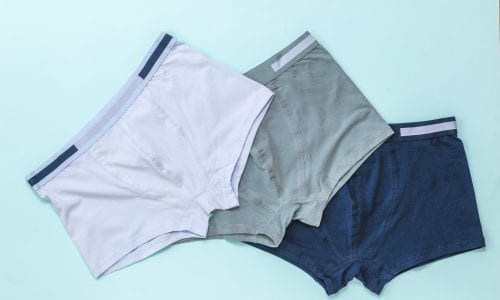The Best Leather Purse

Our Review Process
Don't Waste Your Money is focused on helping you make the best purchasing decision. Our team of experts spends hundreds of hours analyzing, testing, and researching products so you don't have to. Learn more.
Our Picks For The Top Leather Purses
- 1. ESTALON Crossbody Adjustable Strap Leather Purse
- 2. Oak Leathers Adjustable Buckle Strap Leather Purse
- 3. befen Cotton Blend Lined Leather Wristlet Purse
- 4. The Sak Sequoia Zippered Hobo Leather Purse
- 5. Montana West Concealed Carry Holster Hobo Leather Purse
- 6. Kate Spade Leila Triple Compartment Leather Purse
- 7. S-ZONE Top-Handle Hobo Leather Purse
- 8. VALENCHI Fully Lined Bill Compartment Leather Purse
- 9. Fossil Carmen Metal Feet Suede Leather Purse
Genuine cowhide leather gives this crossbody bag durability and quality. The available colors come in both neutral and brighter shades for every style need. It has three exterior pockets and one interior compartment, each with a zipper for security.
Super ConvenientWith multiple exterior and interior zip pockets, this leather purse is a convenient everyday option.
Made from 100% genuine leather, this soft crossbody purse is both attractive and durable. It’s available in multiple color options and has two exterior zip pockets and one interior zip pocket, along with a fully lined bill compartment and a mobile phone holder.
Extra DurableOil-rich genuine leather and a cotton lining equip this crossbody purse for years of regular use.
Made from genuine pebble leather with a cotton lining, this small bag can be worn as a wristlet, clutch or crossbody and has built-in card and cash pockets. You can also choose from more than 50 other designs, leather types and colors.
Customizable OptionOver 50 different designs and an adjustable strap make sure this bag suits your personal style.
You’ll get plenty of room with this leather hobo bag, which has a polyester lining and polyurethane trim. This purse has a zippered main compartment, front zippered pocket, back slit pocket, and three interior pockets, one of which is zippered as well.
Versatile OptionThe hobo style of this artisanal leather purse allows it to expand as you fill it with all your things.
Buying Guide
Leather has long been a popular material for handbags, boots, belts and other accessories because of its softness, flexibility, and weather-resistant qualities. But the process of sourcing and manufacturing leather is expensive, and that expense is usually passed on to consumers.
Since the 1940s, manufacturers have used polyurethane as a substitute for leather. It mimics leather while keeping prices down and being easier to maintain. But polyurethane does have its limits. As hard as manufacturers have worked, it’s tough to mimic the luxurious feel and appealing look of genuine leather. Although leather can be tougher to maintain, it provides a durability you won’t get with synthetic materials.
With a little care, you can buy a leather handbag that will give you years of use. Just remember that not all leather is created equal.
Lower-quality leathers can crack and fade over time. If you want a purse that’s going to hold up over the long haul, you’ll want to search for full-grain leather. Full-grain leather is put through the tanning process immediately after the hair has been removed, so the original grain has not been altered. This helps preserve the leather’s natural oils to give your items that comfortable, broken-in feel that will only improve over time. Top-grain leather, which denotes leather in which the top grain has not been cut away, can be a more affordable alternative that also works well.
You may wish to consider avoiding bonded leather, which is made up of scraps of both synthetic and real leather, and chrome-tanned leather, which is done quickly with harsh chemicals. This is compared with vegetable-tanned leather, which is a process that uses eco-friendly materials over the course of weeks instead of days.
Don’t forget to look at the quality of the stitching and the hardware, as well. These can tell you how durable your leather bag will be in the long run.
If you’re investing in a leather purse, you’ll also want to consider purse types and functionality. A smaller purse is easier to tote around, particularly if you’re hauling it around with you all day. But the lower capacity means you’ll be limited in the items you can store in it. Crossbody purses have become particularly popular in recent years because they distribute the weight in a way that makes it less burdensome, but you won’t want a big, bulky bag at your hip. If you’re looking for something larger, like a backpack or shoulder bag, consider how your cost will rise.
The interior is a consideration with a leather purse. You’ll want a lining that helps protect the integrity of the leather. Polyester and cotton can help absorb any spills or dirt that your belongings introduce to the environment.
What to Look For
- Keep in mind that, unlike synthetic materials, leather can stretch pretty easily. If you’re loading your bag down with belongings, you may eventually find it loses its shape.
- You can buy sprays that add a layer of protection to the material. Use this type of spray right off the bat, then watch for dirty spots and wipe them away with a soft cloth or brush.
- If you won’t be using a leather handbag for a while, remove all the items and fill it with white acid-free paper. Then store it away from sunlight, preferably in some type of protective covering.
- Leather needs conditioning to stay in peak shape. You can buy leather conditioner and use a soft, clean cloth to rub it into the material regularly.
- Leather is generally treated during manufacturing to be water resistant, and consumers can add protection to keep them so. However, the material is also porous, so it can’t necessarily stand prolonged exposure to water. Try to keep it out of the rain and avoid setting it on wet bathroom sinks. If it does get wet, use a soft, clean cloth to absorb as much of the water as possible.
- One big determinant of the quality of a leather purse is where it’s made. Italy is known as a top source of leather products, but some manufacturers take shortcuts to get that label. “Italian leather” might be manufactured elsewhere and sent to Italy for finishing just to get the “made in Italy” tag. England, France, and the U.S. are also consistent producers of quality leather.
- A good purse has enough compartments for all your belongings. An exterior pocket can be a handy place to store those items you need within reach, like keys or lip balm. Make sure interior pockets have a zipper closure so your items don’t fall out and drop to the bottom of your bag.
- For purses with a strap, make sure you’re getting adjustability. If not, you’ll need to measure the length of the strap to make sure it will rest comfortably when it’s hanging from your shoulder.
More to Explore
Throughout history, civilizations have found ways to turn animals into practical products. As soon as stone tools came along 3 million years ago, ancient people were using tools to process animal parts and hides. However, the earliest proof of actual leathercrafting comes from 400,000 B.C. Researchers studied the wear patterns in tools found in Hoxne, England and concluded they were likely used to scrape hides.
Those stone tools evolved by 82,000 B.C. to bone awls, which have been uncovered in South Africa. These awls were larger than sewing needles, making them ideal for piercing thick hides and fur. It’s believed those tools were used to create larger clothing items or shelter coverings. Actual sewing needles came about by 33,000 B.C.
During the Bronze Age (3,000-12,000 B.C), trade made the concept of learning a specialty more appealing. Leatherworkers could perfect their craft and create products they could then trade as a form of currency with other specialists.



















